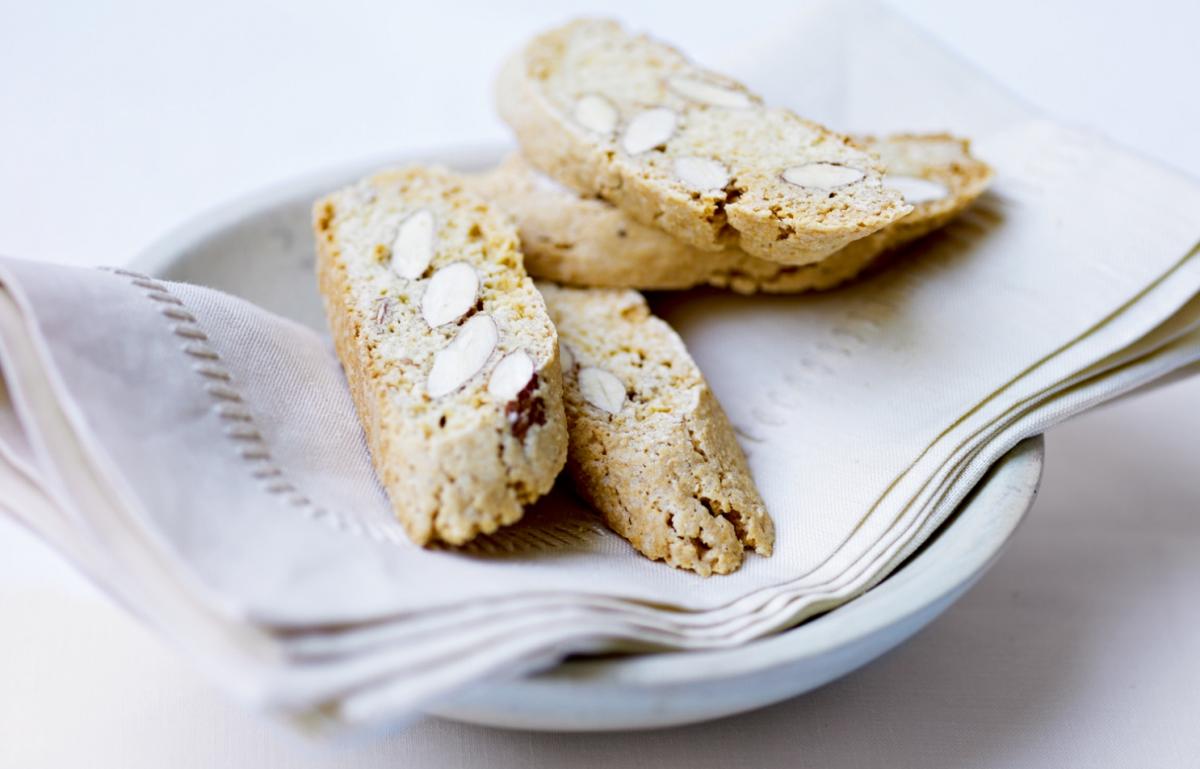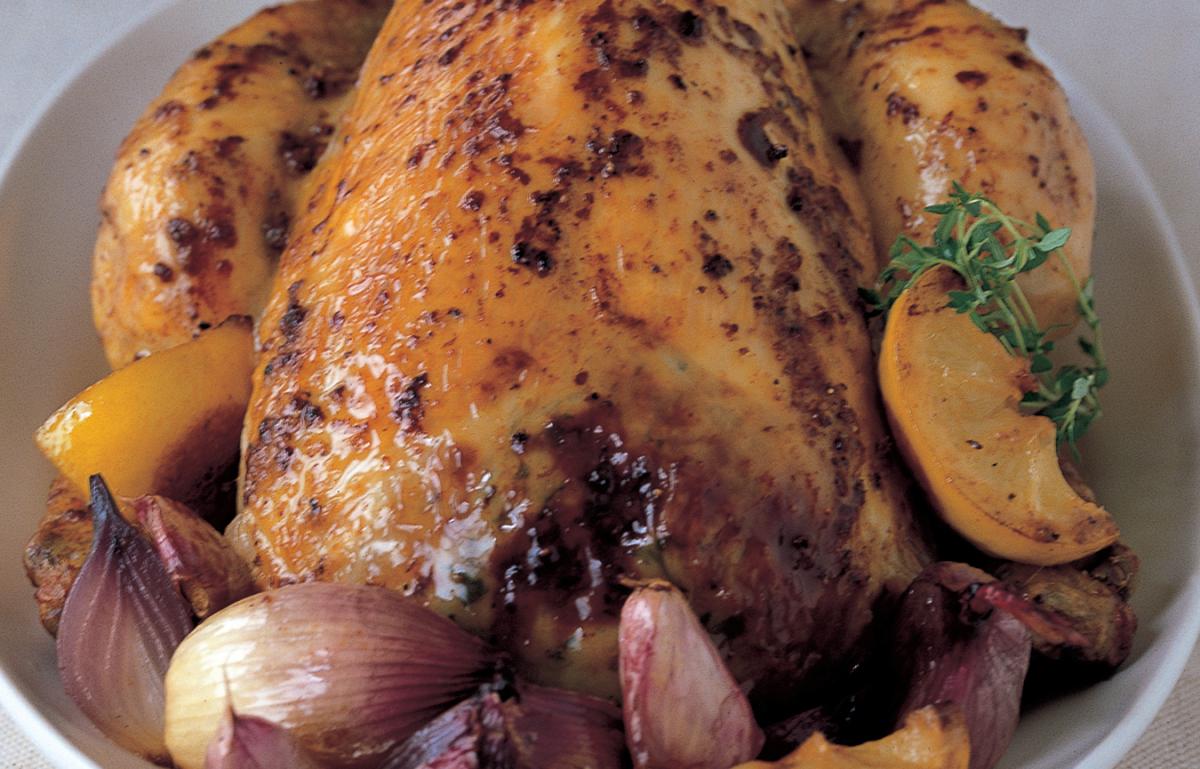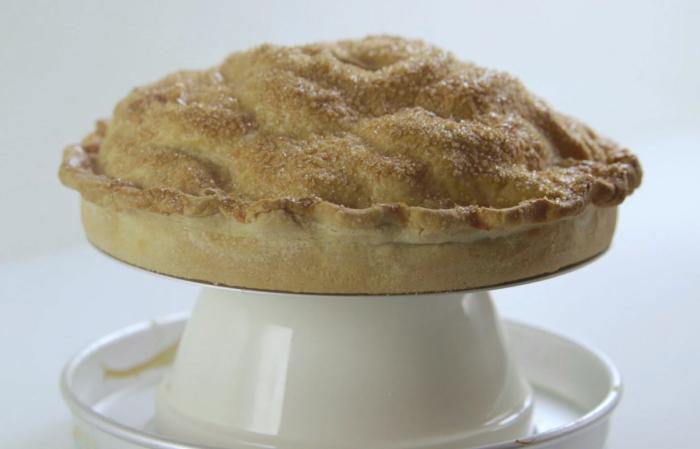


The type of fat you use is a personal choice and can depend on whether or not you are a vegetarian or have anything against animal fats. My opinion is that the best flavour and texture in shortcrust pastry is when equal quantities of pure lard and butter are used. Generally speaking, the amount of fat in shortcrust pastry is half the amount of flour: thus for 4 oz (110 g) of flour you use 2 oz (50 g) of fat.
The fat should be at room temperature and soft enough for a knife to make an indentation straight through it in a second. This is the single most important rule to remember because it needs to be incorporated into the flour as quickly as possible – if it is too cold, you will have to rub it in for twice as long; the fat will become oily with the warmth of your hands and the pastry will be difficult to roll out.

The flour should always be plain and made from soft wheat (ie not strong bread flour) – and watch the date stamps. I have found that stale flour does not make the best pastry. I have changed my mind on salt over the years and now think that pastry, like bread, needs some salt, even if it is to be used in sweet dishes. Sift the flour and a pinch of salt, holding the sieve high above the bowl, so that as much air as possible is incorporated.

Cut the fat into small lumps and add to the flour. Using a knife, cut the fat into the flour. Go on doing this until it looks fairly evenly blended, then begin to rub the fat into the flour using only your fingertips and being as light and gentle as possible. Being light with your fingers is not a special gift, it's just a conscious decision, a signal the brain gives to the fingertips, and then a bit of concentration.

As you lightly rub the fat into the flour, lift it up high and let it fall back down into the bowl, which again means that air is being incorporated all the time, and air is what makes pastry light. Speed is also what's needed here, so don't start daydreaming and go on rubbing all day, but just long enough to make the mixture crumbly with just a few odd lumps here and there. Keep cool – this means yourself, psychologically, as well, because keeping things as cold as possible is important. If the fat becomes oily because the rubbing-in takes longer and everything is too warm, what happens is it coats more flour grains than it should. This means the flour is unable to absorb enough water and the pastry will crumble and be difficult to roll out.

For shortcrust pastry don't use milk or eggs – just add plain water and leave the tap running to get it as cold as possible. Exact amounts can never be specified because the amount of water that flour absorbs varies. Too much water will make the pastry sticky and difficult to roll out, and when it's baked it will be hard; too little, on the other hand, will also make rolling out a problem and the baked result will be too crumbly. Start with about 1 tablespoon, sprinkling it evenly all round.

Then, with a knife, start bringing the dough together, cutting and turning to make it start to cling together. Then discard the knife and bring it all together with your fingertips. Add more water, little by little, if you need it. All the bits of flour and fat should be incorporated and the pastry should leave the bowl completely clean. If this hasn't happened, then keep adding a spot more water (sometimes it really only needs your fingertips dipped into water to bring it together).

All pastry must be rested before rolling out – flour contains something called gluten which reacts with water in a way which, given time, makes the dough more elastic in texture, so that when you come to roll out the dough, this elasticity makes it roll like a dream. Without it, rolling out can be a nightmare because the pastry won't have enough stretch and it will break and crack. So, as the pastry is made, place it in a polythene bag and leave it in the fridge for about 30 minutes. Making pastry in advance is perfectly all right – it will keep for up to three days in a polythene bag in the fridge, but don't forget to remove it and let it come back to room temperature before rolling it out. Unbaked pastry also freezes extremely well for up to three months.

Place the dough on a lightly floured surface and use a rolling pin that is absolutely straight. Lightly dust it with flour and place it in the centre of the dough. Place the flat of your hands lightly on each end of the pin and begin to roll, re-dusting the pin and the surface lightly with flour if you need to stop the pastry sticking. If you want to roll it out to a round, give it quarter-turns as it expands and, provided you roll backwards and forwards, not side to side, it will roll out into a round shape. If you want an oblong, just knock the sides gently with the rolling pin to keep it in shape; if you want a square, give quarter-turns – as for a round – and then square it up using the rolling pin to knock the edges into shape.

I have found it impossible to make shortcrust pastry in a food processor alone, as you can't gauge how much water is needed without feeling the pastry. But it is possible to process the flour and fat and the advantage is that you can use cold fat straight out of the fridge. Be careful not to over-process – just 1-2 minutes on a low speed is enough. Then tip it into a bowl and add water as described above.

Follow us Like us on Facebook Follow us on twitter Follow us on instagram Follow us on pinterest Follow us on youtube
© 2001-2024 All Rights Reserved Delia Online